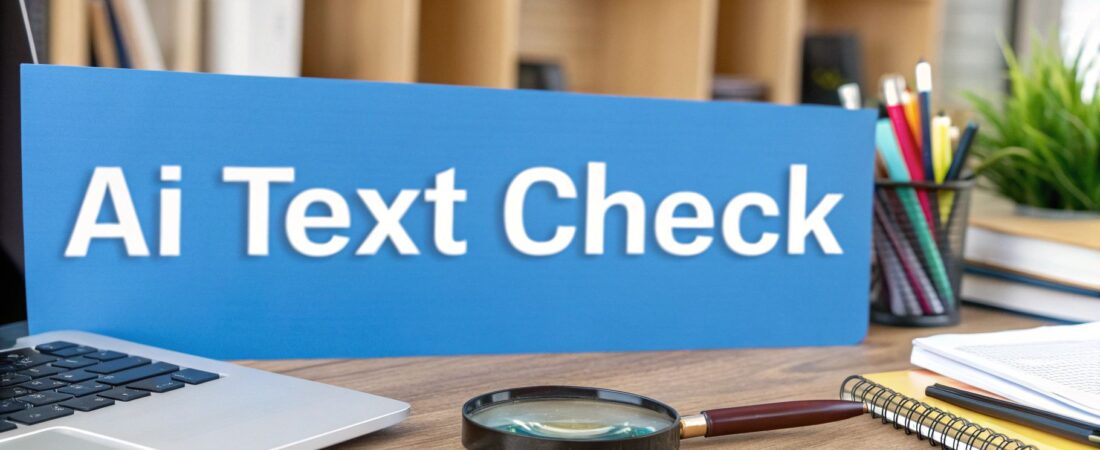Understanding Today's AI Detection Landscape
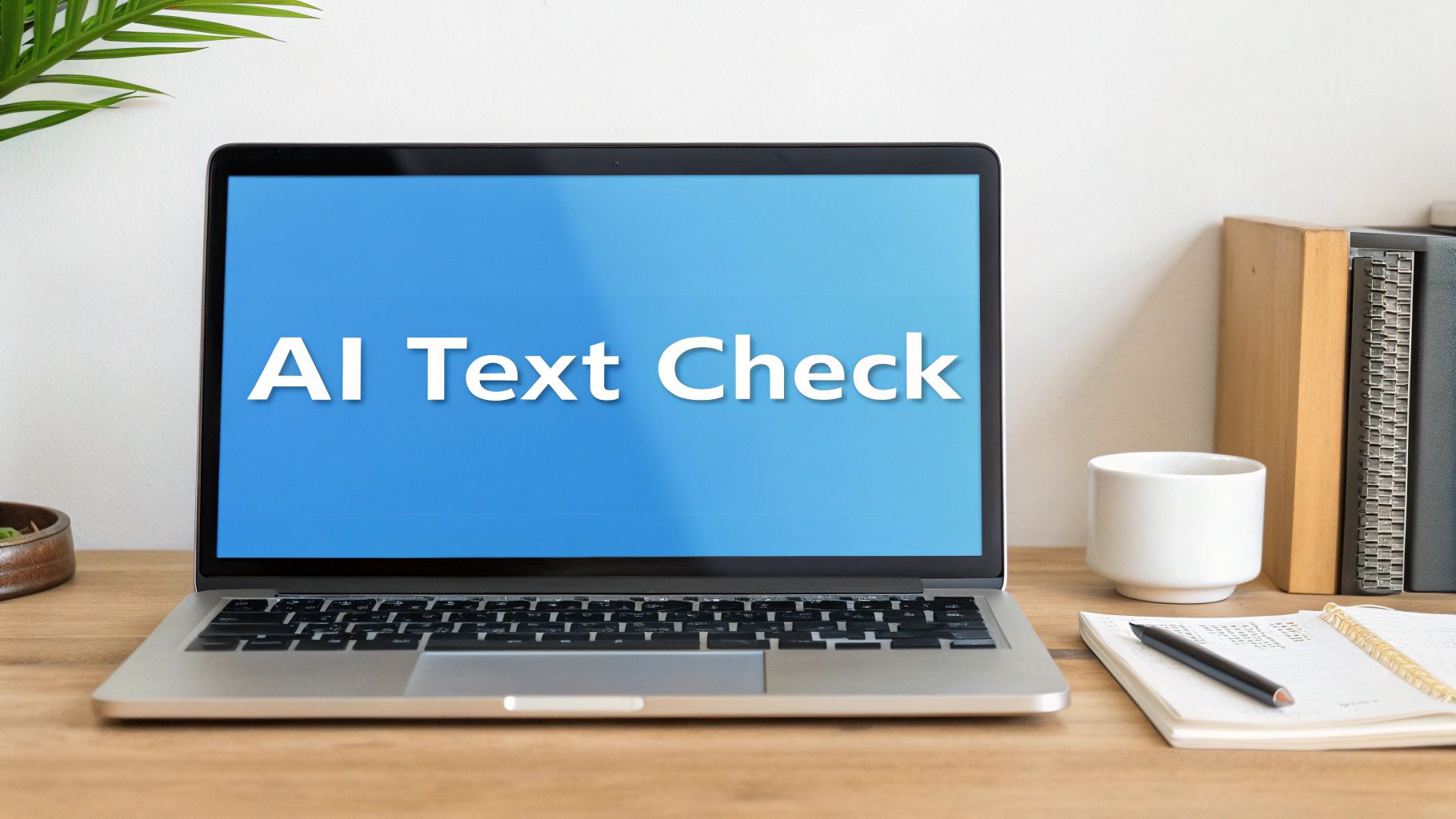
As AI writing tools become more advanced, content professionals face growing challenges in verifying text authenticity. The task of identifying AI-generated content has become increasingly difficult as these tools produce more natural-sounding text. This raises an important question: what are the most effective methods for detecting AI-written content?
The Limitations of Human Intuition
While many believe experienced editors can easily identify AI-generated text, research tells a different story. Studies have found that even skilled editors achieve only 53% accuracy when relying on judgment alone – barely better than random chance. This poor performance stems from AI's growing ability to mirror human writing patterns convincingly. Simple gut instinct is no longer enough to reliably spot AI content.
The Growing Capabilities of AI Writing
AI writing technology continues to make rapid progress in generating human-like text. Modern AI tools can adapt to different writing styles and tones while incorporating emotional elements that were once unique to human writers. These improvements make it harder for both casual readers and trained professionals to distinguish between AI and human-written content. This evolution demands more sophisticated detection approaches.
Getting Better at Detection
Successfully identifying AI content requires using multiple complementary methods. Understanding the strengths and limitations of both human reviewers and automated detection tools is essential. While some detection tools show promising results in controlled tests, their real-world performance often varies. Looking at contextual signals like an author's writing history and style consistency can provide valuable additional clues. Interpreting detection scores requires careful consideration of reliability indicators.
What's Next for AI Detection
As AI writing capabilities expand, detection methods must keep pace. New approaches are emerging that combine multiple detection techniques to improve accuracy. Promising developments include algorithms that can identify subtle patterns in how AI structures text. For content professionals, staying current with detection advances while refining their evaluation strategies will be key to effectively screening AI-generated text going forward.
Mastering Professional Detection Tools
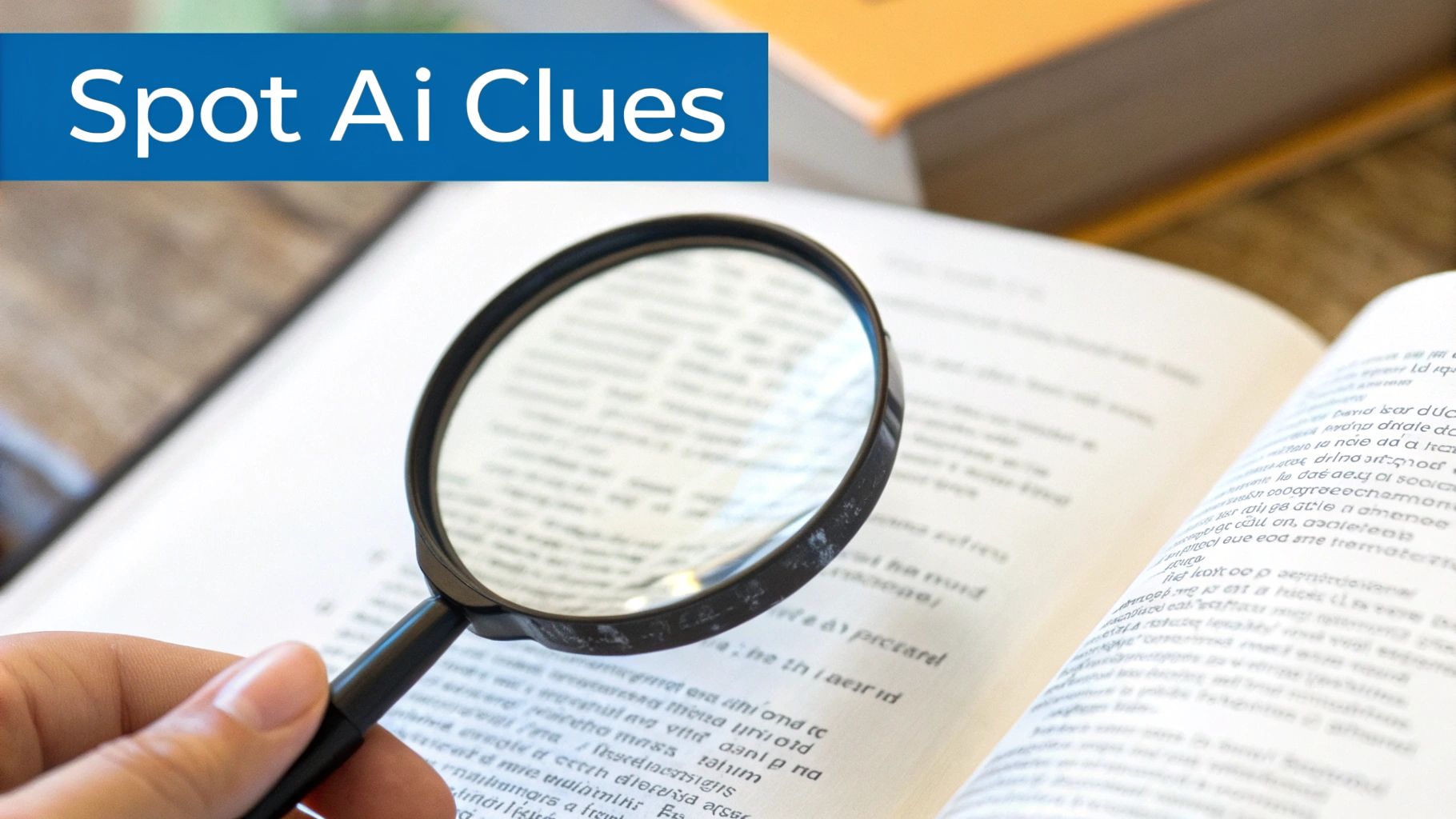
Content professionals now need reliable methods to identify AI-written text, moving beyond basic checks to professional detection tools. These tools analyze text patterns using advanced models like BERT to spot AI authorship signs. By using these tools effectively, content teams can verify text authenticity with greater certainty.
Harnessing the Power of BERT and Beyond
Recent advances in detection technology have produced impressive results. For instance, a BERT-based model achieved 97.71% accuracy in identifying AI text after careful training with techniques like word stemming. New methods continue emerging – the POGER approach outperforms traditional detection by 14.3%, especially for challenging cases where the AI system is unknown. This shows how detection capabilities keep improving as the technology develops.
Understanding Detection Scores and Reliability
Detection tools provide helpful guidance but require thoughtful interpretation. For example, Turnitin notes that scores between 1-20% may be less reliable and need additional verification. Rather than focusing only on percentage scores, consider factors like text length – longer samples typically produce more dependable results with fewer false readings. You might be interested in: How to master content tools for more details on using these tools effectively.
Choosing the Right Tool for Your Needs
Different detection tools offer varying capabilities that suit different use cases. When selecting a tool, consider practical factors like cost and usability alongside technical features. Some excel at analyzing long content while others work better for short text. Many platforms now combine multiple detection approaches for more thorough analysis.
Implementing Effective Detection Strategies
Success requires more than just running text through detection software. The best approach combines automated tools with human expertise – like reviewing an author's writing style and history for context. This allows content teams to benefit from both technology and judgment. Regular updates on new detection methods and refinements to evaluation processes help maintain effectiveness as AI writing continues advancing. Taking these steps helps ensure reliable distinction between human and AI-written content.
Spotting the Tell-Tale Signs of AI Writing
Understanding how to identify AI-generated text is becoming an essential skill for content professionals. While automated detection tools can help, the most reliable approach is learning to spot subtle clues in language use, content structure, and emotional expression. Let's explore the key indicators that can help you distinguish between human and machine-written content.
Decoding Linguistic Patterns
The language patterns in AI writing often reveal its non-human origin. When AI generates text, it tends to use overly formal or rigid phrasing instead of the natural, conversational style that humans employ. For instance, while a human might write "She went to the store," AI text might say "The individual proceeded to the designated retail establishment." AI also frequently repeats certain words and sentence structures in a way that creates an artificial rhythm. Though some repetition is normal in writing, AI's patterns often feel mechanical rather than organic.
Identifying Structural Quirks
The way AI organizes ideas often differs noticeably from human writing. One clear sign is awkward transitions between paragraphs – where human writers naturally connect thoughts and build arguments step by step, AI sometimes jumps between topics without clear logical links. Another common indicator is excessive reliance on lists and bullet points. While these formatting tools serve a purpose, AI tends to overuse them as a crutch rather than incorporating varied paragraph structures like human writers do. Learn more about effective writing structure in our article about How to master grammar and style.
Recognizing Emotional Inconsistencies
Despite advances in natural language processing, AI still struggles to convey authentic emotion in writing. Watch for emotional expressions that feel forced or out of place – like an exclamation point after a basic statement that wouldn't normally excite a human writer. AI-generated text also tends to lack the subtle emotional touches that make human writing engaging, such as well-timed humor, thoughtful personal stories, or clever irony. Even when emotional words are present, the overall emotional arc often feels flat or artificial compared to content written by humans who naturally understand emotional context and nuance.
Building a Reliable Detection Workflow
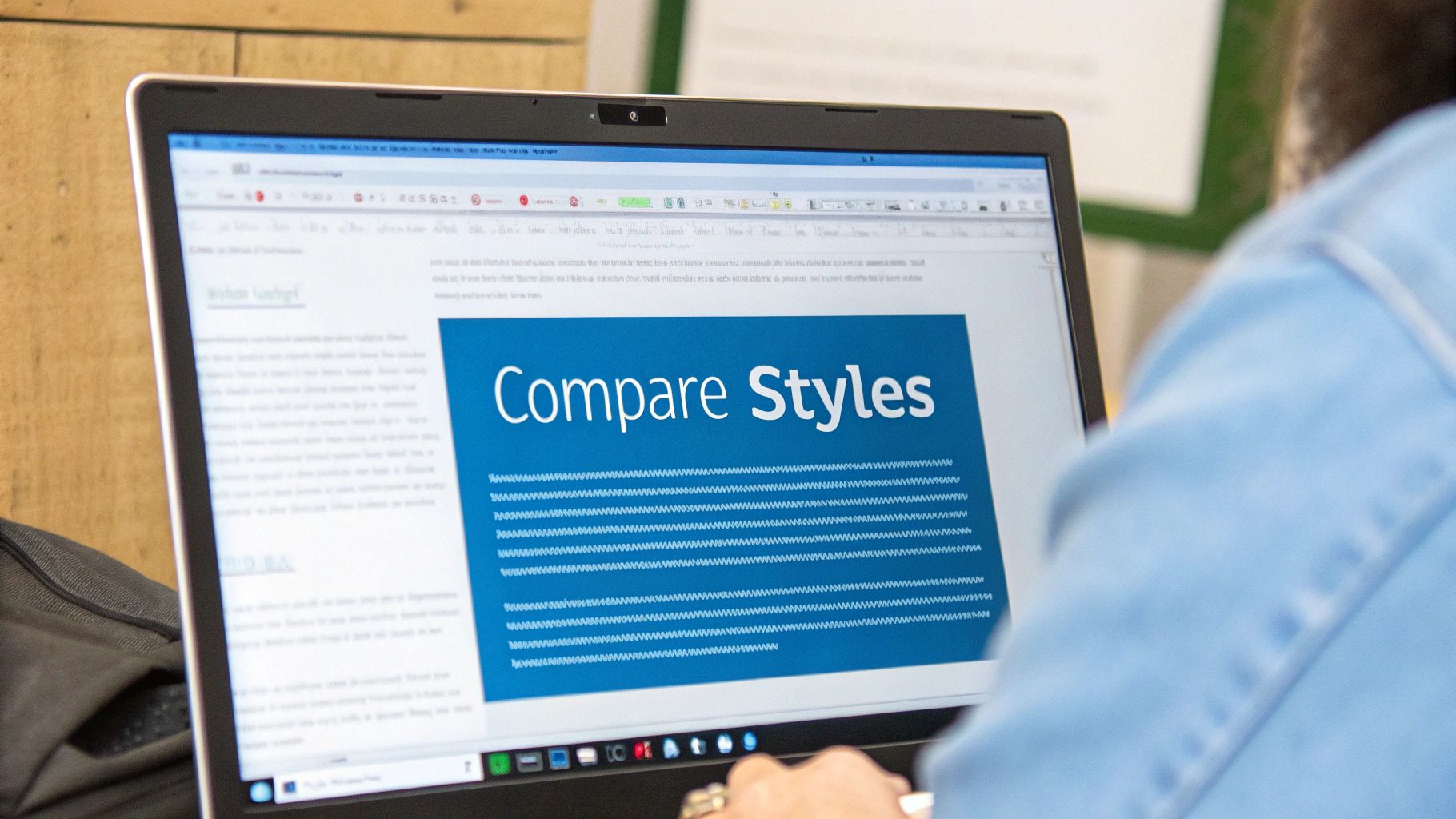
Finding AI-written text requires more than just running content through a detector. For reliable results, content teams need a well-designed process combining both software tools and human analysis. This dual approach helps catch AI content while avoiding false flags. Here's how to build an effective detection workflow.
Combining Automated Tools and Human Expertise
Modern AI detection software offers a strong first screening layer, with some tools reaching accuracy rates of 97.71% in controlled testing. However, these tools work best when paired with human review. Where software might flag natural language variations as suspicious, human reviewers can assess context, writing style, and other nuances that automated systems often miss. For instance, an expert reviewer can spot signs like overly repetitive phrasing or unnatural transitions that some tools overlook.
The Power of the POGER Method
Recent advances like POGER (proxy-guided efficient re-sampling) have improved detection capabilities significantly. This approach has achieved a 14.3% better detection rate compared to older methods, especially when analyzing text from unknown AI models. By incorporating new detection techniques as they emerge, teams can steadily improve their accuracy rates. For more details on combining different detection approaches, see How to get better results.
Minimizing False Positives: A Practical Approach
One key challenge is avoiding false positives – when human-written text gets incorrectly flagged as AI-generated. A simple but effective solution is using multiple detection passes. Start with an automated scan, then if content gets flagged, run it through a second tool or method. This helps confirm whether the initial flag was accurate or a false alarm.
Building Your Detection Protocol: A Step-by-Step Guide
A clear, structured process helps teams review content consistently. An effective protocol includes:
- Initial Screening: Run text through automated detection software
- Secondary Verification: For flagged content, conduct manual analysis of writing patterns, tone consistency, and structure
- Contextual Analysis: Consider the content source, author history, and purpose – does the writing align with past work?
- Final Determination: Make an evidence-based decision using results from automated tools, manual review, and context analysis
Adapting to Different Content Environments
Different content formats need specialized detection approaches. Social media posts and other short content can be harder to analyze since detectors have less text to work with. Mixed content that combines human and AI writing requires careful line-by-line review. Success comes from adjusting methods based on content type while maintaining consistent accuracy standards. This flexible yet systematic approach helps teams spot AI content across diverse formats and platforms.
Solving Complex Detection Scenarios
Identifying AI-generated text becomes more challenging when dealing with complex scenarios that go beyond straightforward detection. While basic tools work well for obvious cases, detecting AI content in short texts, edited materials, or mixed sources requires a more thoughtful and layered approach.
Tackling Short-Form Content and Mixed-Source Materials
Short social media posts create unique detection challenges since their limited text provides fewer linguistic patterns to analyze. It's similar to trying to identify a musical piece from just a few notes rather than a complete song. In these cases, examining broader context like posting patterns and platform trends becomes essential for accurate assessment.
Content that combines AI text with human edits needs careful examination. Rather than scanning entire pieces at once, analyzing text line-by-line while watching for shifts in tone and style helps identify AI-generated sections more precisely. This detailed review method improves accuracy when determining which parts likely came from AI versus human writers.
Navigating Heavily Edited and Limited Sample Texts
When AI-generated text has been extensively edited, it can hide the typical indicators that detection tools seek out. Just as photo editing can make artificial elements look natural, skilled editing can help AI writing blend with human content. Using multiple detection tools and comparing their results helps reveal subtle signs of AI involvement that single tools might miss.
Limited text samples also make detection more difficult. Like how a small medical sample constrains diagnostic options, brief text provides fewer patterns for analysis. When faced with short samples, gathering additional context about the content's source becomes vital. This might mean reviewing other work by the same creator or finding related content examples to build a more complete picture.
Adapting Strategies for Different Content Types and Maintaining Accuracy
Different content formats need distinct detection approaches since an academic paper shows different characteristics than marketing copy or creative writing. The evaluation criteria must match the specific content type – for example, missing citations in an academic piece might simply indicate poor research rather than AI generation, while the same issue in a blog post could suggest AI involvement.
Getting accurate results with limited samples requires careful consideration. Rather than relying only on software tools, incorporating human review adds valuable insight. Experienced writers and editors often notice subtle style inconsistencies that automated systems overlook. By combining technical tools with human expertise, we create a stronger approach to identifying AI text across various scenarios. This balanced method also helps detection strategies evolve as AI writing technology advances. Understanding current tool limitations while adapting methods for different content types improves our ability to accurately distinguish between AI and human-written material.
Staying Ahead of AI Evolution
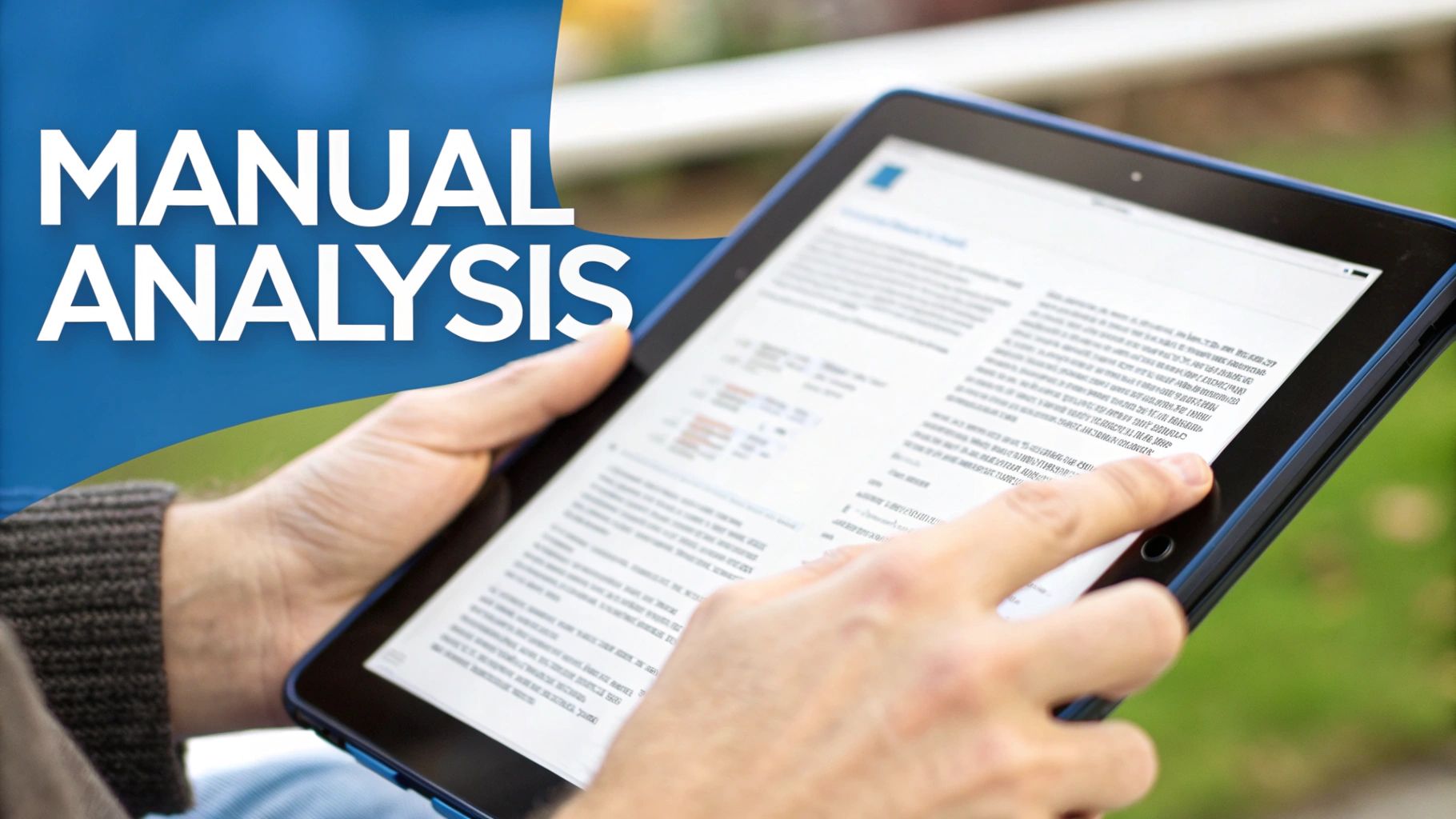
AI-generated text detection is a field that changes nearly every day, much like AI technology itself. To successfully identify AI content, you need to regularly update your knowledge and methods. For instance, newer AI writing models have become remarkably skilled at mimicking human writing patterns, making detection more challenging than ever. This means detection approaches must grow more refined to keep pace.
Adapting Your Detection Strategies
Success in AI detection requires flexibility and continuous learning. The obvious markers that once revealed AI text are becoming more subtle and harder to spot. Recent research shows that while BERT-based detection models can achieve over 97% accuracy in controlled tests, they need frequent updates to maintain effectiveness. Modern detection requires analyzing multiple factors beyond simple scores – including examining text length and understanding the broader context of the content's source.
Emerging Technologies and Methodologies
The field of AI detection continues to advance with promising new approaches. One notable development is proxy-guided efficient re-sampling (POGER), which has shown better results than conventional detection methods, especially with complex text samples. Other new techniques analyze word generation patterns to identify the subtle fingerprints of AI writing. Keeping up with these developments is essential for anyone serious about AI detection.
Practical Guidelines for the Future
Taking a proactive approach to AI detection means actively seeking knowledge about both new AI writing capabilities and detection methods. You can stay informed by following industry experts, joining online communities focused on AI detection, and reading technical updates from leading researchers. Creating structured detection workflows helps maintain consistency, while using multiple detection tools provides more reliable results. This comprehensive strategy helps catch AI-generated content even as it becomes more advanced.
SmartStudi offers a complete set of tools for students looking to improve their academic writing. From AI detection and plagiarism checking to paraphrasing tools, essay generators, citation tools, summarizers, and grammar checkers, SmartStudi helps students produce their best academic work. Visit SmartStudi today to see how our tools can support your studies!
